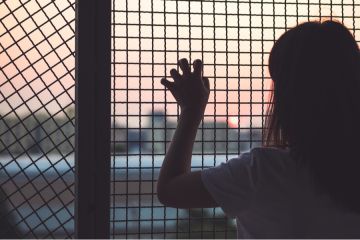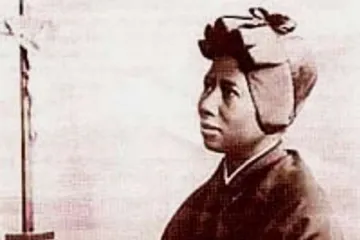ACI Prensa Staff, Feb 9, 2024 / 18:00 pm
Any day of the year more than 50 million people are enslaved in the world according to the latest estimate published in a joint report by the International Organization for Migration (IOM), the International Labor Organization (ILO), and Walk Free, a human rights group that seeks the eradication of modern slavery in all its forms.
Many of the people affected by trafficking are in Latin America, where 90% of the victims are women, especially girls, destined for sexual exploitation and where many of the countless migrants who cross the continent are prey for human traffickers and those facilitating illegal immigration.
The Catholic Church dedicated Thursday as a Day of Prayer and Reflection against Human Trafficking.
Fifty million people in servitude means that 1 out of every 150 people in the world is enslaved. Of those, 35% are boys and girls, according to the 2022 Global Report of the United Nations Office on Drugs and Crime (UNODC).
The business brings in more than $150 billion annually in 145 countries, containing 94% of the world’s population. Two-thirds of profits come from sexual exploitation, according to the 2014 ILO document “Profits and Poverty: The Economics of Forced Labor.”
Trafficking operates through the recruitment, transportation, transfer, and/or harboring or reception of people, under threat, use of force, or other forms of coercion, kidnapping, fraud, deception, abuse of power, taking advantage of vulnerability, to receive payment or benefits to have control over another person for the purpose of exploitation, as explained by the Palermo Protocol of 2000.
Human trafficking is a reality that occurs on all continents. In Latin America, women in particular are the victims of slavery: “More than 80% of the victims of human trafficking in Latin America are women and girls who, for the most part, are found in countries in the same region,” stated U.N. Secretary General Antonio Guterres on July 31, 2019, World Anti-Trafficking Day, according to Voice of America (VOA).
“According to a U.N. report, 92% of victims in South America and 75% of victims in Central America and the Caribbean are trafficked to neighboring or nearby countries,” the VOA stated.
Modern-day slavery can take several forms: farm work, servile marriages, child marriages, victims forced to be hitmen or “mules” to transport drugs, children sold through catalogs for “pedophile sex tourism,” and more.
According to IOM data, there are more than 600 million international tourist trips annually; 20% of travelers acknowledged that they travel looking for sex and 3% acknowledged they travel looking for sex with children, a figure that translates into 4 million people looking for pedophile sex. Several Latin American countries are the focus of this tourism.
The mechanisms of human trafficking
Among the most frequent forms of trafficking, in addition to those already mentioned, are the exploitation of people of all ages for sex and labor, using children as soldiers or for criminal activities, enslaving victims, forced begging, illegal extraction, and trafficking of human organs and fluids. For example, in Michoacán state, Mexico, the sale of corneas exported to the United States and the removal of organs from minors have been repeatedly reported.
Child sexual slavery includes the enslavement of babies as well as the production and distribution of child pornography.
During the 2019–2022 COVID-19 pandemic, according to information from the Financial Intelligence Unit (UIF) of Mexico as reported in July 2020 by the Mexican newspaper La Jornada, the production of child pornography grew by 117% thanks to grooming and recruitment of minors through social media and online games. In Argentina, in the same period, child porn production grew by 80%.
“Estimates indicate that situations of modern slavery are by no means transitory: Subjection to forced labor can last for years, while forced marriage, in most cases, is equivalent to a life sentence,” the 2022 report from the IOM, ILO, and Walk Free stated.
Migrants and vulnerability
(Story continues below)
Through pastoral commissions for migrants and itinerant people in different Latin American countries, the Church pays special attention to the precarious and vulnerable situation of migrants, who face difficult journeys in caravans across the continent and are easy victims of human traffickers and those facilitating illegal immigration.
The situation affects thousands of children: According to the UNICEF Children in Danger report of Sept. 7, 2023, 1 in every 4 people who are migrating through Latin America and the Caribbean are children and adolescents; that is, 25% of migrants, a record number — according to this organization — compared with other regions of the world where they do not exceed 13%.
In addition, during the COVID-19 pandemic, the number of migrant children from Latin American countries passing through Mexico on their way to the U.S. grew nine times; 50% of them were traveling alone without family or trusted adults to accompany them, according to the United Nations Bulletin, April 20, 2021.
Day of Prayer and Reflection against Trafficking
Established by Pope Francis in 2015, the 10th consecutive year a Day of Prayer and Reflection against Trafficking was held Thursday coinciding with the liturgical commemoration of St. Josephine Bakhita, herself a victim of the slave trade.
With the theme “Journeying for Dignity; Listen, Dream, Act,” young people belonging to different anti-trafficking organizations and from different countries held an anti-trafficking march in Rome.
This story was first published by ACI Prensa, CNA’s Spanish-language news partner. It has been translated and adapted by CNA.






